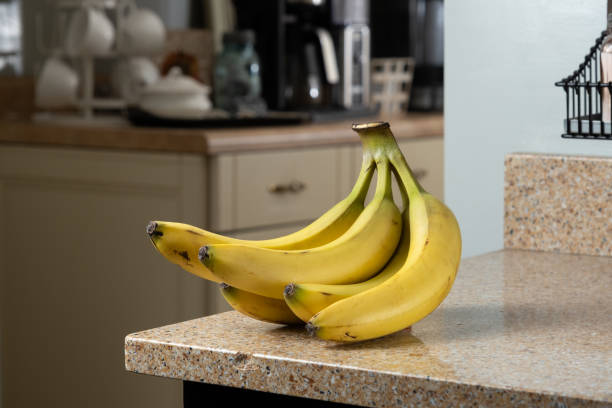
Coconut rice is a flavourful dish that combines the rich, creamy essence of coconut milk with perfectly cooked rice. This dish is enjoyed across various cultures, particularly in Asia, Africa, the Caribbean and South American cuisines. Whether you prefer a savoury or slightly sweet version, coconut rice is versatile, easy to prepare, and packed with nutrients. In this comprehensive guide, I will walk you through the steps to prepare Nigerian coconut rice while also exploring its health benefits.
Coconut rice is a delicious and nutritious dish enjoyed in many cultures worldwide. It is prepared by cooking rice with coconut milk, grated coconut, or coconut oil, infusing the dish with a rich, creamy flavor and a host of health benefits.
Culinary Versatility and Cultural Significance
Apart from its health benefits, coconut rice is celebrated for its versatility and delicious taste. Different cultures have unique ways of preparing the dish, infusing it with diverse flavors and spices.
1. Adaptable to Various Diets
Coconut rice can be customized to fit various dietary preferences, including vegan, gluten-free, and dairy-free diets. It serves as a great base for both savory and sweet dishes.
2. Complements a Wide Range of Dishes
Coconut rice pairs well with numerous foods, including grilled meats, seafood, vegetables, and curries. Its creamy texture and mild sweetness enhance the flavors of spicy and savory dishes.
3. Traditional and Cultural Significance
Many cultures regard coconut rice as a special dish for celebrations and festivals. In some Asian and African traditions, coconut rice is prepared during important ceremonies, symbolizing prosperity and togetherness.
How to Prepare Coconut Rice at Home
Making coconut rice at home is simple and requires only a few ingredients. Below is a basic recipe for delicious coconut rice:
Ingredients for Coconut Rice
The key to making delicious coconut rice is using fresh, high-quality ingredients. Below are the essential ingredients:
- 2 cups of long-grain white rice (or jasmine/basmati rice for extra fragrance)
- 1 can (400ml) of coconut milk
- 1 cup of water (adjust as needed)
- 1 teaspoon of salt
- 2 tablespoons of coconut oil or butter
- 1-2 pandan leaves (optional, for additional aroma)
- ½ teaspoon of ground ginger (optional, for added flavor)
- 1 small onion (optional, finely chopped for a savory version)
- ½ teaspoon of garlic powder or 1 minced garlic clove
- Toasted coconut flakes for garnish (optional)
Step-by-Step Guide to Making Coconut Rice
Step 1: Rinse the Rice
Start by rinsing the rice thoroughly under running water until the water runs clear. This process removes excess starch, preventing the rice from becoming overly sticky. Draining the rice properly ensures a fluffy texture.
Step 2: Sauté Aromatics (Optional for Savory Versions)
For a more savory coconut rice dish, heat the coconut oil or butter in a medium-sized pot over medium heat. Add the chopped onions and garlic, and sauté until they become fragrant and translucent. If using ginger, add it at this stage as well.
Step 3: Combine Ingredients
Once the aromatics are ready, pour in the coconut milk, water, and salt. Stir well to combine. If using pandan leaves, tie them into a knot and add them to the pot for additional fragrance.
Step 4: Add the Rice
Add the rinsed and drained rice to the liquid mixture. Stir gently to distribute the ingredients evenly.
Step 5: Cook the Rice
Bring the mixture to a gentle boil over medium-high heat. Once it starts boiling, reduce the heat to low, cover the pot with a tight-fitting lid, and let the rice simmer for about 15-20 minutes.
Step 6: Let It Rest
After the rice has absorbed all the liquid, remove it from the heat and let it sit, covered, for another 10 minutes. This resting period helps the rice firm up and become fluffier.
Step 7: Fluff and Serve
Remove the pandan leaves if used, then fluff the rice gently with a fork to separate the grains. Serve warm with your favourite dishes, such as grilled chicken, seafood, or vegetable curry. Garnish with toasted coconut flakes for extra flavour and texture.

Health Benefits of Coconut Rice
Coconut rice is not only a delightful dish but also offers several health benefits due to the nutritional properties of its ingredients. By incorporating coconut into rice, the meal gains additional health-enhancing properties that benefit overall well-being.
Below are some of the key health advantages:
1. Rich in Healthy Fats
Coconut milk contains medium-chain triglycerides (MCTs), which are easily digestible and provide a quick source of energy. Unlike long-chain fats, MCTs may support weight loss by promoting fat burning.
2. Supports Digestive Health
Coconut milk is known for its antimicrobial properties, which help promote gut health. Additionally, coconut oil contains lauric acid, which has antibacterial and antiviral effects, potentially aiding digestion and reducing inflammation. Coconut rice promotes smooth digestion and prevents common digestive issues like bloating and constipation. Additionally, coconut possesses antimicrobial properties that help maintain a healthy gut micro biome.
3. Provides Essential Nutrients
Coconut rice is a good source of several important nutrients, including:
- Manganese: Supports bone health and metabolism.
- Magnesium: Aids muscle function and nerve signaling.
- Iron: Essential for red blood cell production.
4. Enhances Heart Health
While coconut milk contains saturated fats, studies suggest that the MCTs in coconut may have a neutral or even positive effect on heart health by raising
good HDL cholesterol levels.
5. Boosts Immunity
Coconut contains antioxidants and antimicrobial properties that may enhance the immune system. Lauric acid in coconut milk has been found to have antibacterial and antiviral benefits.
Coconut contains lauric acid. Lauric acid boosts the immune system by helping the body fight infections, making coconut rice a great meal for maintaining overall immunity.
6. Improves Skin and Hair Health
The healthy fats in coconut milk can support skin hydration and hair health. Consuming coconut-based foods regularly may contribute to better skin elasticity and hair strength.
Eating coconut rice can combat dryness, and promote healthy hair growth due to the presence of essential nutrients like vitamin E and healthy fats.
7. Energy-Boosting Properties
The MCTs in coconut milk serve as a quick energy source, making coconut rice an excellent meal choice for individuals needing sustained energy levels.
The combination of carbohydrates from rice and fats from coconut ensures sustained energy release, making it an excellent meal choice for individuals
needing long-lasting fuel, such as athletes and physically active individuals.
8. High in Fiber The fiber content in coconut rice, particularly when prepared with grated coconut, aids digestion, prevents constipation, and supports gut health by promoting the growth of beneficial bacteria.
9, Regulates Blood Sugar Levels
Coconut rice, particularly when made with whole-grain or brown rice, has a lower glycemic index than plain white rice. The healthy fats and fiber slow down carbohydrate digestion, preventing sudden blood sugar spikes and promoting better insulin sensitivity.
Variations of Coconut Rice
Coconut rice can be modified to suit different preferences and cuisines. Here are some popular variations:
1. Thai Coconut Rice
- Often includes jasmine rice, coconut milk, a pinch of sugar, and pandan leaves for a fragrant, slightly sweet flavor.
2. Nigerian Coconut Rice
- Typically prepared with parboiled rice, coconut milk, and added ingredients such as tomatoes, bell peppers, and spices for a more savory taste.
3. Indian Coconut Rice
- Features basmati rice cooked with coconut milk, mustard seeds, curry leaves, and chilies for a spicy, aromatic dish.
4. Caribbean Coconut Rice
- Often paired with beans (such as pigeon peas or kidney beans) and flavored with allspice, thyme, and scotch bonnet peppers for a tropical twist.
Tips for the Best Coconut Rice
- Use Full-Fat Coconut Milk: This enhances the creaminess and flavor.
- Control the Water Ratio: Adjust based on the type of rice you use to ensure it is not too mushy or dry.
- Allow Resting Time: Letting the rice rest after cooking helps it absorb moisture evenly and become fluffier.
- Enhance with Herbs and Spices: Adding ingredients like pandan leaves, cinnamon, or curry leaves can elevate the aroma and taste.
- Try Different Toppings: Garnish with toasted coconut, nuts, or fresh herbs for extra texture and flavor.
Potential Considerations When Eating Coconut Rice
While coconut rice offers many benefits, it should be consumed in moderation, especially for individuals with specific health conditions.
- Caloric Content – Coconut milk and oil add extra calories, so portion control is necessary for those watching their weight.
- Saturated Fat – While MCTs are beneficial, excessive consumption of saturated fat may not be suitable for individuals with heart disease or high cholesterol.
- Carbohydrate Consideration – People with diabetes should opt for brown rice to manage blood sugar levels effectively.
Conclusion
Coconut rice is a delicious and nutritious dish that can be easily prepared at home. With its versatility and numerous health benefits, it is an excellent addition to any meal. Whether you enjoy it as a side dish or the main course, coconut rice brings a tropical touch to your table while providing essential nutrients for overall well-being.
By following the steps outlined in this guide, you can create a perfectly cooked, flavorful coconut rice dish that suits your taste preferences. Experiment with different variations and ingredients to find your favorite version. Enjoy your coconut rice with confidence, knowing that it is both tasty and beneficial to your health.
Coconut rice is a flavourful dish with a variety of health benefits, including improved heart health, better digestion, enhanced brain function, and immune system support. Its rich cultural significance and culinary versatility make it a cherished meal worldwide. By incorporating coconut rice into a clean eating diet, individuals can enjoy its delicious taste while reaping its numerous health benefits!




